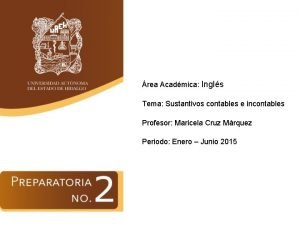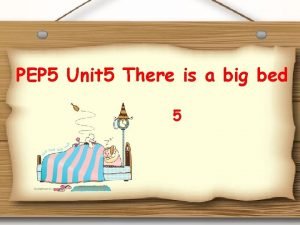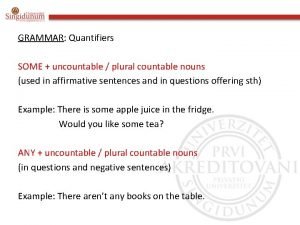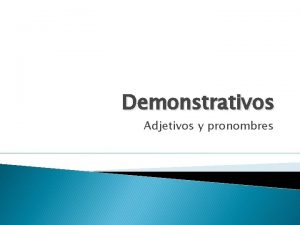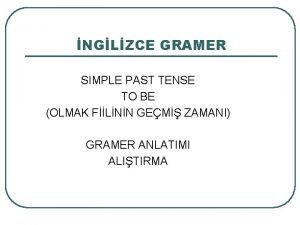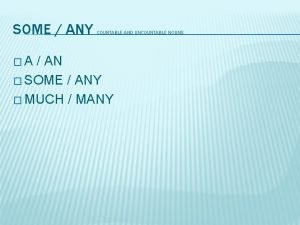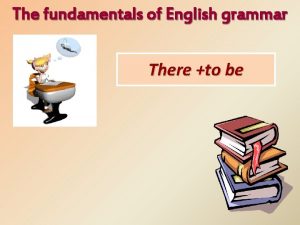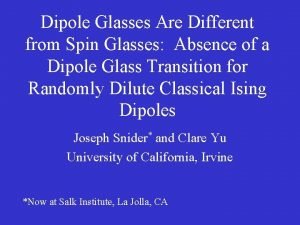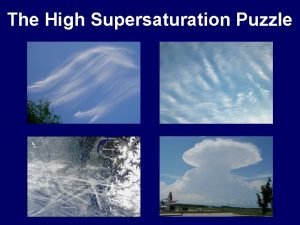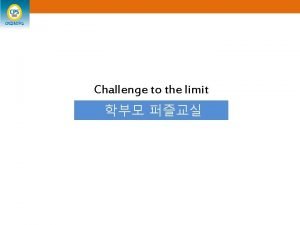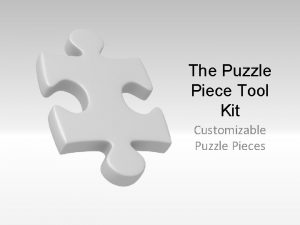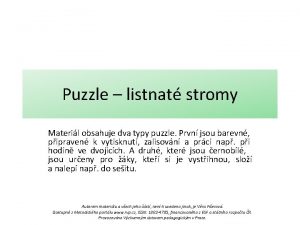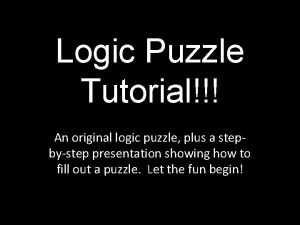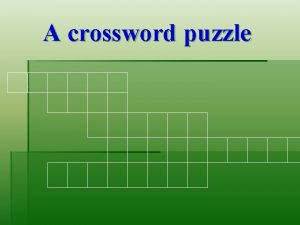Puzzle UpsideDown Glasses There are n glasses on



![Learning to Ask: Neural Question Generation for Reading Comprehension [ACL 17] Xinya Du, Junru Learning to Ask: Neural Question Generation for Reading Comprehension [ACL 17] Xinya Du, Junru](https://slidetodoc.com/presentation_image_h2/be9f2c160c6288bfb88b789662d2c6a8/image-4.jpg)











![Follow-up Work[1] Bi. LSTM Sum/Conv+pool • Aim to select a subset of k question-worthy Follow-up Work[1] Bi. LSTM Sum/Conv+pool • Aim to select a subset of k question-worthy](https://slidetodoc.com/presentation_image_h2/be9f2c160c6288bfb88b789662d2c6a8/image-16.jpg)

- Slides: 17

Puzzle | Upside-Down Glasses • There are n glasses on the table, all standing upside down. • In one move, you are allowed to turn over exactly n – 1 of them. • Determine one method to turn up all the glasses. GAO, Yifan Neural Question Generation

Puzzle | Upside-Down Glasses • If n is odd : • As in one move, we are allowed to turn over exactly n – 1 of them. • If n is odd then n – 1 i. e, the number of glasses turned over in one move, is even. • Therefore, we can only turn up(or turn down) even number of glasses for each move. • However, there is odd number of glasses to be turned up. • No solution to turn up all glasses! GAO, Yifan Neural Question Generation

Puzzle | Upside-Down Glasses • If n is even : • Let us assume that the glasses are numbered from 1 to n. • If n is even, the problem can be solved by making the following move n times: turn over all the glasses except the ith glass, where i = 1, 2, . . . , n. • For example: 1 -> up, 0 ->down, n=4 • 0000 -> 0111 -> 1100 -> 0001 -> 1111 GAO, Yifan Neural Question Generation
![Learning to Ask Neural Question Generation for Reading Comprehension ACL 17 Xinya Du Junru Learning to Ask: Neural Question Generation for Reading Comprehension [ACL 17] Xinya Du, Junru](https://slidetodoc.com/presentation_image_h2/be9f2c160c6288bfb88b789662d2c6a8/image-4.jpg)
Learning to Ask: Neural Question Generation for Reading Comprehension [ACL 17] Xinya Du, Junru Shao, Claire Cardie GAO, Yifan Neural Question Generation

What is Question Generation and why QG? A New Task: Automatic natural question generation for sentences from text passages in reading comprehension. Example: From Wikipedia article Oxygen Real Applications: Education: Generating questions for testing understanding. Chat bot: Asking questions to start a conversation or to request feedback. Improving question answering (QA) GAO, Yifan Neural Question Generation

QG: Different from many NLG Problems • Unlike Machine Translation: • The input and output are in the same language • Length ratio is often far from one to one • Unlike Summarization: • QG may involve substantial changes to words and their ordering • Summarization usually removes words. GAO, Yifan Neural Question Generation

Task Objective • GAO, Yifan Neural Question Generation

Sentence Level Seq 2 Seq Model • Encoding only sentence as input, do not consider paragraph/contextlevel information. GAO, Yifan Neural Question Generation

Paragraph Level Seq 2 Seq Model • Encoding both sentence and paragraph (that contains the sentence) as input, but only attending source sentence hidden states. Also tried encoding title/ passage-level information, but performance drops. GAO, Yifan Neural Question Generation

Training and Inference • Training: Minimize the negative log-likelihood with respect to θ: • Inference: Beam search and UNK replacement • For the UNK token at time step t, we replace it with the token in the input sentence with the highest attention score, the index of which is: GAO, Yifan Neural Question Generation

Dataset The authors build their QG dataset on SQu. AD corpus Pruning constraint: the sentence-question pair have at least one non-stop-word in common GAO, Yifan They pair up the questions with the sentence(s) which contain the answer span, and paragraph with contain the sentence Neural Question Generation

Experiments • Automatic Evaluation: • Beat strong rule-based system • Directly copy (Direct. In) forms a very strong baseline • Adding paragraph lowers the performance GAO, Yifan Neural Question Generation

Output Analysis Rule-based model copies nearly word for word the input sentence with minor syntactic change. • redundant info. • sometimes ungrammatical Sentence-level model and paragraph-level both: • learns to select an important aspect of the sentence • Questions are more natural sounding and vary more in terms of type. Para. -level model takes into account context info. beyond sentence. GAO, Yifan Neural Question Generation

Interpretability Attention weight matrix shows the soft alignment between the sentence(left) and the generated question (top). GAO, Yifan Neural Question Generation

Conclusion • The first fully data-driven neural network approach for question generation in the reading comprehension setting. • They investigated encoding sentence- and paragraph-level information for this task. GAO, Yifan Neural Question Generation
![Followup Work1 Bi LSTM SumConvpool Aim to select a subset of k questionworthy Follow-up Work[1] Bi. LSTM Sum/Conv+pool • Aim to select a subset of k question-worthy](https://slidetodoc.com/presentation_image_h2/be9f2c160c6288bfb88b789662d2c6a8/image-16.jpg)
Follow-up Work[1] Bi. LSTM Sum/Conv+pool • Aim to select a subset of k question-worthy sentences (k < m). • y=1: the sentence is question-worthy. • y=0: the sentence may not contain question-worthy point. [1] Du, Xinya and Claire Cardie. “Identifying Where to Focus in Reading Comprehension for Neural Question Generation. ” EMNLP (2017). GAO, Yifan Neural Question Generation

Thanks Q&A GAO, Yifan Neural Question Generation
 Mikael ferm
Mikael ferm There is there are
There is there are There is there are negative form
There is there are negative form Arehay
Arehay There is there are
There is there are The tweezers in this drawer
The tweezers in this drawer Pep unit
Pep unit There is ve there are
There is ve there are Sightseeing countable or uncountable
Sightseeing countable or uncountable Demonstrativos
Demonstrativos Tema there is there are
Tema there is there are There was there were ile ilgili cümleler
There was there were ile ilgili cümleler There isn't any burger
There isn't any burger Ecological succession
Ecological succession A an some
A an some What part of speech is open
What part of speech is open Negetive sentences
Negetive sentences There is there are
There is there are

